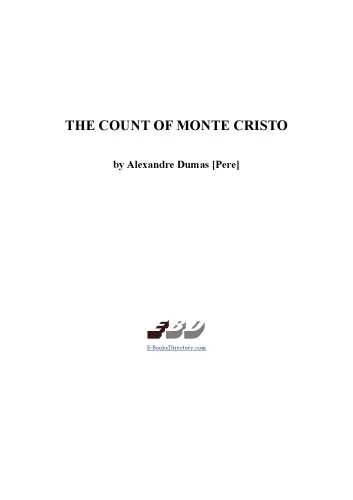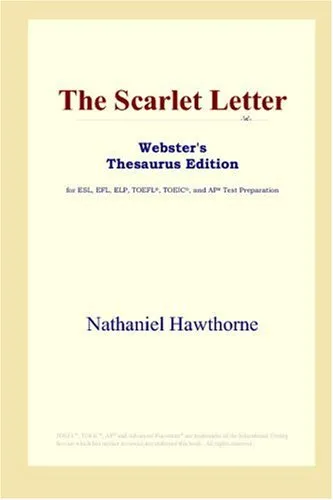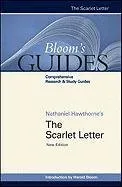The Scarlet Letter (Oxford World's Classics)
3.4
Reviews from our users

You Can Ask your questions from this book's AI after Login
Each download or ask from book AI costs 2 points. To earn more free points, please visit the Points Guide Page and complete some valuable actions.Related Refrences:
Persian Summary
Introduction to "The Scarlet Letter (Oxford World's Classics)"
Nathaniel Hawthorne's "The Scarlet Letter" is a cornerstone of American literature, exploring themes of legalism, sin, and guilt in a 17th-century Puritan setting. This edition, part of the esteemed Oxford World's Classics series, offers a scholarly yet accessible insight into Hawthorne's richly crafted narrative.
Detailed Summary of the Book
"The Scarlet Letter" is set in 1642, in a Puritan colony in Massachusetts. The novel begins with the public shaming of Hester Prynne, who has given birth to a daughter named Pearl amidst rumors that the child is illegitimate. Hester is forced to wear the scarlet letter 'A' as a symbol of her adultery. The community pressures her to reveal the father's identity, but she remains silent.
Hester's estranged husband, who has taken the alias Roger Chillingworth, arrives in the colony and vows to discover the identity of Pearl’s father. Meanwhile, the town minister, Arthur Dimmesdale, is battling with his internal guilt and failing health, suspected by the reader to be connected to his undisclosed secrets.
As Chillingworth gets closer to Dimmesdale, realizing he is the father, the tension escalates. Dimmesdale's health deteriorates further under Chillingworth’s psychological torment. Hester and Dimmesdale eventually plan to escape together, but their plans are thwarted. In a dramatic climax, Dimmesdale confesses his sin to the community and dies in Hester's arms, seeking redemption.
The novel concludes with Chillingworth losing his purpose and dying shortly after. Hester and Pearl leave the colony, but Hester eventually returns years later, continuing to wear the scarlet letter by choice. Her grave, marked with the letter ‘A,’ becomes a symbol of complex redemption and resilience.
Key Takeaways
- Exploration of themes such as sin, guilt, and atonement in a society governed by strict moral codes.
- The novel illustrates the conflict between individual identity and societal expectations.
- Hawthorne's rich use of symbolism, particularly through the scarlet letter, reflects the multifaceted nature of human emotion and community judgment.
- The portrayal of strong, conflicted characters offers a deep psychological study of human nature and morality.
Famous Quotes from the Book
"We dream in our waking moments, and walk in our sleep."
"She had not known the weight until she felt the freedom."
"No man, for any considerable period, can wear one face to himself, and another to the multitude, without finally getting bewildered as to which may be the true."
Why This Book Matters
"The Scarlet Letter" remains a relevant study of the human condition, resonating with readers through its examination of personal and societal morality, identity, and the complexities of forgiveness and redemption. Hawthorne’s novel challenges readers to reflect on the nature of sin, the complexities surrounding justice and compassion, and the inner strength required to overcome public and private burdens.
The novel masterfully navigates the interplay between individual versus community dynamics, showcasing Hawthorne’s understanding of human frailties and strengths. Its timeless themes make it a perpetual subject of academic discussion and cultural reflection, ensuring its place in the canon of classic American literature. For modern readers, this Oxford World's Classics edition of "The Scarlet Letter" provides essential contextual insights, enhancing both the understanding and appreciation of Hawthorne's work.
Free Direct Download
You Can Download this book after Login
Accessing books through legal platforms and public libraries not only supports the rights of authors and publishers but also contributes to the sustainability of reading culture. Before downloading, please take a moment to consider these options.
Find this book on other platforms:
WorldCat helps you find books in libraries worldwide.
See ratings, reviews, and discussions on Goodreads.
Find and buy rare or used books on AbeBooks.
1530
بازدید3.4
امتیاز0
نظر98%
رضایتReviews:
3.4
Based on 0 users review
Questions & Answers
Ask questions about this book or help others by answering
No questions yet. Be the first to ask!
















